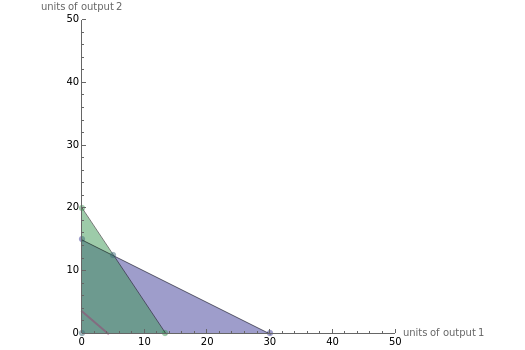A Simple, Standard Linear Programming Scenario
A Simple, Standard Linear Programming Scenario
A standard type of linear programming problem involves a producer who produces two outputs, each of which requires two inputs to make. The four sliders in the upper left of the control grid determine how many units of each input are required to produce one unit of each output. The producer faces constraints in that the amount of each input available is limited, and chooses a production schedule with an eye toward making the most profit. The profit per unit for each output can be adjusted using the two sliders in the profit row.
The blue region contains all production schedules that meet the first constraint—that is, for which the supply of input 1 is sufficient. The green region contains all production schedules that meet the second constraint—that is, for which the supply of input 2 is sufficient. The overlap of these two regions is called the feasible set and represents all production schedules that can be executed given the constraints, and the purple line is an iso-profit line—all production schedules on this line yield the profit level shown next to the profit level slider.
